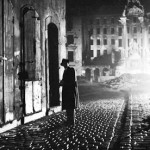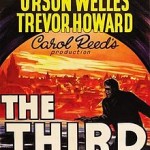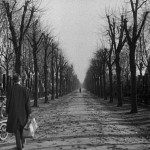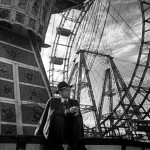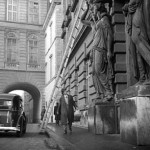In the micro-review of The Third Man for my all time top 20 movies I say this, and still stand by every word:
Post-war Vienna captured in its crumbled glory. The rats run but Harry Lime is one step ahead. Welles is cool and sharp, but even he cannot engineer an exit. Gloriously photographed and sumptuously lit, and who could possibly forget the beguiling zither music?
This is film noir at its iconic heyday, and never was the noir so gloriously portrayed as by Carol Reed in bringing to life Graham Green’s screenplay. The time was unique – never again would Vienna be the same, and never again will it be lit and shot with such exquisite care and precision, not to mention years ahead of its time. The citizens of Vienna detested the portrayal of their city in a wrecked state, and split into four sectors in the same way as Berlin (a critical component of the plot of The Third Man), though in hindsight it is as much capturing for posterity a moment in history as a movie.
But there were other objections to Reed’s style too. As recounted by Wikipedia:
The atmospheric use of black-and-white expressionist cinematography by Robert Krasker, with harsh lighting and distorted “Dutch angle” camera angles, is a key feature of The Third Man. Combined with the unique theme music, seedy locations, and acclaimed performances from the cast, the style evokes the atmosphere of an exhausted, cynical post-war Vienna at the start of the Cold War. The film’s unusual camera angles, however, were not appreciated by all critics at the time. C. A. Lejeune in The Observer described Reed’s “habit of printing his scenes askew, with floors sloping at a diagonal and close-ups deliriously tilted” as “most distracting”. American director William Wyler, a close friend of Reed’s, sent him a spirit level, with a note saying, “Carol, next time you make a picture, just put it on top of the camera, will you?”
Reed did far more than that. He assembled for this movie one of the finest casts, revolving around the almighty talent and ego that was Orson Welles, but with the likes of Joseph Cotten, Allida Valli, Trevor Howard, Wilfrid Hyde-White and indeed a fine cast of Austrian and German actors to back up the eponymous anti-hero, how could the venture possibly have failed? Certainly he was aided by Welles, whose Harry Lime is both a tease and the most charismatic screen character of the era, nonchalant to the last and donning a half-smile that stays long in the memory. Reed also benefitted from Welles ad libbing dialogue, including the famous cuckoo clock speech in the Ferris Wheel at Prater Park in Vienna:
“You know what the fellow said – in Italy, for thirty years under the Borgias, they had warfare, terror, murder and bloodshed, but they produced Michelangelo, Leonardo da Vinci and the Renaissance. In Switzerland, they had brotherly love, they had five hundred years of democracy and peace – and what did that produce? The cuckoo clock.”
Then there is the final shot at Lime’s second funeral, as his girlfriend Anna walks down the long tree-lined path then right past Martins, ignoring him entirely. This is achingly poignant and quite beautifully done.
But every component works here, with the cream on top the hypnotically wonderful music of Anton Karas, a performer and later restauranteur in Vienna. The Harry Lime Theme was a massive hit, selling millions and earning a lifetime reputation for Karas. Has there ever been a theme tune so evocative and so closely associated with the picture? Not many!
The plot is essentially a thriller about racketeering but also Cotten’s Holly Martins spotting strange inconsistencies in the stories of witnesses over the apparent, and actually staged, death in a road traffic accident of his childhood friend Harry Lime. As Martins explores further he finally tracks down Lime, on the run from the authorities for his crimes of diluting penicillin and selling it to hospitals. Lime scuttles about the ruined city by dark, then along the sewers until he is finally shot in a chase through the sewer network.
But the plot seems almost incidental here. Enjoy what you see, and take in the sumptuous atmosphere and joyful acting. There will never be another like it!


